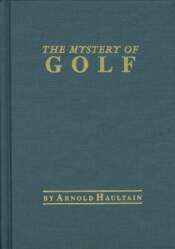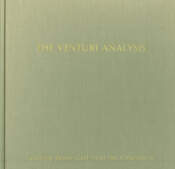-
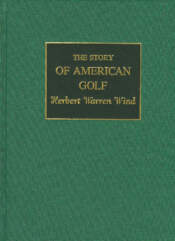 By Herbert Warren Wind Wind's masterpiece is one of the great books in golf. In the second half of the twentieth century, Wind contributed as much to golf as the force of nature with which he shares a name. He helped Ben Hogan codify his knowledge of the swing and Gene Sarazen and Jack Nicklaus tell their life stories in riveting fashion. (He also gave Amen Corner its name.) And, like a certain famous Englishman, he took golf reportage to a new level of specificity, insight and narrative grace, writing primarily for the New Yorker. He always saw himself as the heir and apprentice to Bernard Darwin, but in some ways he surpassed the master, translating his principles into a lively, colloquial American idiom. First published in 1948, Wind's most cohesive work traced American golf from its earliest stirrings in Yonkers, New York, in 1888. He updated the book in 1956 and again in 1975, nearly doubling its size. The Story of American Golf is just that—a great story. You can't put it down even though you know how it all turns out Afterword by Robert. S. Macdonald.
By Herbert Warren Wind Wind's masterpiece is one of the great books in golf. In the second half of the twentieth century, Wind contributed as much to golf as the force of nature with which he shares a name. He helped Ben Hogan codify his knowledge of the swing and Gene Sarazen and Jack Nicklaus tell their life stories in riveting fashion. (He also gave Amen Corner its name.) And, like a certain famous Englishman, he took golf reportage to a new level of specificity, insight and narrative grace, writing primarily for the New Yorker. He always saw himself as the heir and apprentice to Bernard Darwin, but in some ways he surpassed the master, translating his principles into a lively, colloquial American idiom. First published in 1948, Wind's most cohesive work traced American golf from its earliest stirrings in Yonkers, New York, in 1888. He updated the book in 1956 and again in 1975, nearly doubling its size. The Story of American Golf is just that—a great story. You can't put it down even though you know how it all turns out Afterword by Robert. S. Macdonald. -
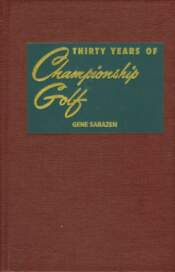
By Gene Sarazen
This candid autobiography of the legendary golfer gives a fine account of golf during the 1920s and 30s. This is such an enjoyable read by one of golf's true greats with one delightful story after another about Sarazen's life in golf, which began as like many others in this time period as a caddie.
From his infamous double eagle at Augusta to his touching story with the elderly caddie Daniels and their win at The British, this book is jammed packed with golf told through the eyes of a man who played alongside the like of Vardon, Cotton, Armour, Snead, Hogan and Hagen, among others. What a fascinating insight into not only this wonderful champion and his life, but the game itself. Expertly written with Herbert Warren Wind. Afterword by Peter Ryde. -
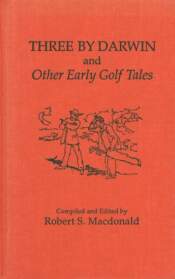 Edited by Robert S. Macdonald A collection of the finest golf fiction from the first half of the 20th century, beginning with “The Haunted Major”, the earliest and most famous of all golf stories. Also included is what many consider the best golf story ever written: “Dormey One”, by Holworthy Hall, a powerful tale of an old champion and a young challenger. Plus three Bernard Darwin stories, never before published in book form. The criteria for selecting the stories, nine in all, was that you, the reader, could not put any of them down unfinished. Foreword by Robert S. Macdonald.
Edited by Robert S. Macdonald A collection of the finest golf fiction from the first half of the 20th century, beginning with “The Haunted Major”, the earliest and most famous of all golf stories. Also included is what many consider the best golf story ever written: “Dormey One”, by Holworthy Hall, a powerful tale of an old champion and a young challenger. Plus three Bernard Darwin stories, never before published in book form. The criteria for selecting the stories, nine in all, was that you, the reader, could not put any of them down unfinished. Foreword by Robert S. Macdonald. -
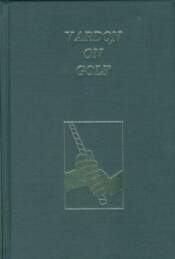 Edited by Herbert Warren Wind and Robert S. Macdonald Harry Vardon--6 time Open Champion and a true golf superstar. This is the best of Vardon's writing, including autobiographical and instructional material. A gem of a book. An original publication by The Classics of Golf. Afterword by S.L. McKinlay.
Edited by Herbert Warren Wind and Robert S. Macdonald Harry Vardon--6 time Open Champion and a true golf superstar. This is the best of Vardon's writing, including autobiographical and instructional material. A gem of a book. An original publication by The Classics of Golf. Afterword by S.L. McKinlay. -
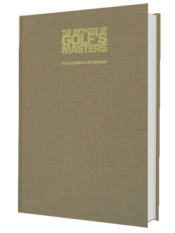
By Dick Aultman and Ken Bowden
This is a puzzling book to categorize. While not exactly a book of instruction, you will learn more about the golf swing digesting Ken Bowden and Dick Aultman’s The Methods of Golf’s Masters than you will at the practice tee. It is a unique blend of astute analysis and historical exactitude, probing the origins and evolution of the modern swing, using 16-famous players, each emblematic of a particular nuance of style, for demonstrative purposes. The authors also have an exciting new premise: “A recurring theme in this book is the influence the master golfer’s personalities have had on their playing methods.” It is a curious viewpoint that can ultimately assist us in our own development. The authors’ theory is that the most influential factor determining both a golfer’s swing and his style of play is his temperament and that forcing technique outside of a natural comfort zone can only end in disaster. That personality should be so dominant a component is surprising, but the evidence they present is convincing. -
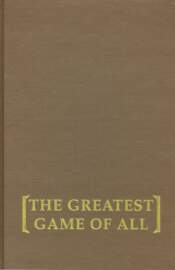 By Jack Nicklaus with Herbert Warren Wind Written at the height of his powers--this books is a fantastic insight into one of the great sportsman in history. The chapters on instruction are terrific, reflecting Nicklaus' focus on a few fundamentals and his uncomplicated approach to the game. What you see in this book is an amazing attitude and mentality that carries Nicklaus to the most majors ever won and doing it with class. The book was written with the Dean of American Sportwriters, Herbert Warren Wind, who writing brings out the real Nicklaus.
By Jack Nicklaus with Herbert Warren Wind Written at the height of his powers--this books is a fantastic insight into one of the great sportsman in history. The chapters on instruction are terrific, reflecting Nicklaus' focus on a few fundamentals and his uncomplicated approach to the game. What you see in this book is an amazing attitude and mentality that carries Nicklaus to the most majors ever won and doing it with class. The book was written with the Dean of American Sportwriters, Herbert Warren Wind, who writing brings out the real Nicklaus. -
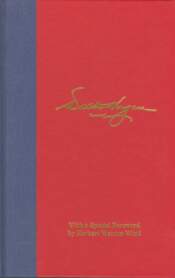
$40.00Add to cart
By Walter Hagen with Magaret Seaton Heck One of the game's most dashing and feared players, he is summed up in his most-remembered saying: " I never wanted to be a millionaire - I just wanted to live like one". This is Walter Hagen's own story of the two decades when he ruled the golfing world as king. Hagen not only won a major tournament every year for twenty years-a record never even approached by any other golfer-but his personality dominated the game during that period. A fascinating read that also shows how he opened up the golf world to professionals--who previously weren't even allowed in the clubhouse. Foreword by Herbert Warren Wind.



